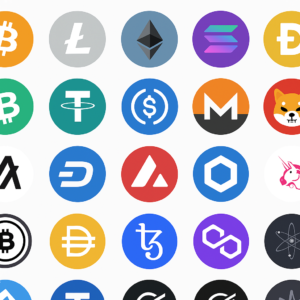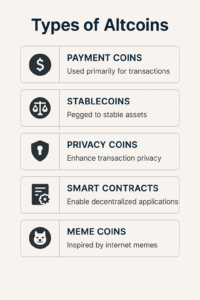What Are Altcoins? A Beginner-Friendly Guide to the Cryptos Beyond Bitcoin
When people think of crypto, they usually think of Bitcoin. But if you’ve ever asked yourself, “What are altcoins?”—you’re not alone. Altcoins are essentially all the other cryptocurrencies that aren’t Bitcoin, and believe me, there are thousands of them out there.
Whether you’re mining, trading, or just learning, understanding what altcoins are and how they work can help you explore the broader crypto ecosystem—and maybe even spot the next big thing.

What Are Altcoins?
The term altcoin is short for “alternative coin.” In simple terms, it refers to any cryptocurrency that isn’t Bitcoin. These coins were created to address Bitcoin’s limitations, introduce new features, or offer completely different use cases.
While Bitcoin was the pioneer, altcoins have taken the original idea and expanded on it—sometimes drastically.
Why Altcoins Exist
Altcoins aren’t just Bitcoin knock-offs. They exist for a reason. Most were built to do something different or better:
-
Faster Transactions – Litecoin, for example, confirms blocks every 2.5 minutes vs. Bitcoin’s 10.
-
Lower Fees – Some altcoins are more cost-effective for small or frequent transactions.
-
Smart Contracts – Ethereum changed the game with smart contracts, which automate trustless agreements on the blockchain.
-
Privacy – Coins like Monero and Zcash are designed to keep your financial activity completely anonymous.
-
Energy Efficiency – Proof-of-Stake coins like Cardano use less energy than Bitcoin’s Proof-of-Work model.
🔗 Read more: Proof of Work: How Crypto Mining Really Works
Types of Altcoins (with Examples)

Altcoins can be grouped into a few main categories, each offering something unique:
1. Payment Coins
These aim to be faster, cheaper, or more scalable alternatives to Bitcoin.
-
Litecoin (LTC) – Designed for quick payments with low fees.
-
Bitcoin Cash (BCH) – A fork of Bitcoin that focuses on faster block times and scalability.
2. Smart Contract Platforms
These power decentralized apps (DApps) and programmable blockchain features.
-
Ethereum (ETH) – The OG smart contract platform.
-
Cardano (ADA) – Academic and security-focused.
-
Solana (SOL) – Built for speed and minimal transaction fees.
3. Stablecoins
Designed to keep a stable value by pegging to real-world assets.
-
Tether (USDT) – Pegged to the US Dollar and widely used across exchanges.
-
USD Coin (USDC) – Transparent and commonly used in DeFi ecosystems.
4. Privacy Coins
These focus on transaction anonymity and untraceability.
-
Monero (XMR) – Completely private by default.
-
Zcash (ZEC) – Offers both transparent and shielded transactions.
5. Meme Coins
Started as jokes but now some are worth billions thanks to their communities.
-
Dogecoin (DOGE) – Powered by memes and Elon Musk tweets.
-
Shiba Inu (SHIB) – A fun coin with a loyal (and loud) fanbase.
Are Altcoins a Good Investment?
That depends. Altcoins can be profitable but risky. Bitcoin is relatively stable in the crypto world, but most altcoins are speculative. Here’s what I look for before diving in:
-
Use Case – Does it solve a real-world problem or offer something new?
-
Development Team – Active devs usually mean better long-term prospects.
-
Community Support – A strong community can keep a project alive even in a bear market.
-
Liquidity – Can you easily buy/sell the coin?
-
Security – Many altcoins have been rug-pulled or exploited. Do your homework.
Hype does not lead to value! Invest wisely!
Final Thoughts
Altcoins are where much of the innovation in crypto happens. If Bitcoin is digital gold, altcoins are the experimental playground for everything from fast payments to decentralized finance.
So, what are altcoins? They’re your ticket to understanding how diverse—and exciting—the crypto world really is. But remember: the altcoin jungle is wild. Always do your research, and never invest more than you can afford to lose.
Got questions? Leave a comment or check out my Beginner’s Guide to Crypto to get started.
📩 Sign up for our newsletter to stay updated on blockchain trends, crypto mining tips, and more!
